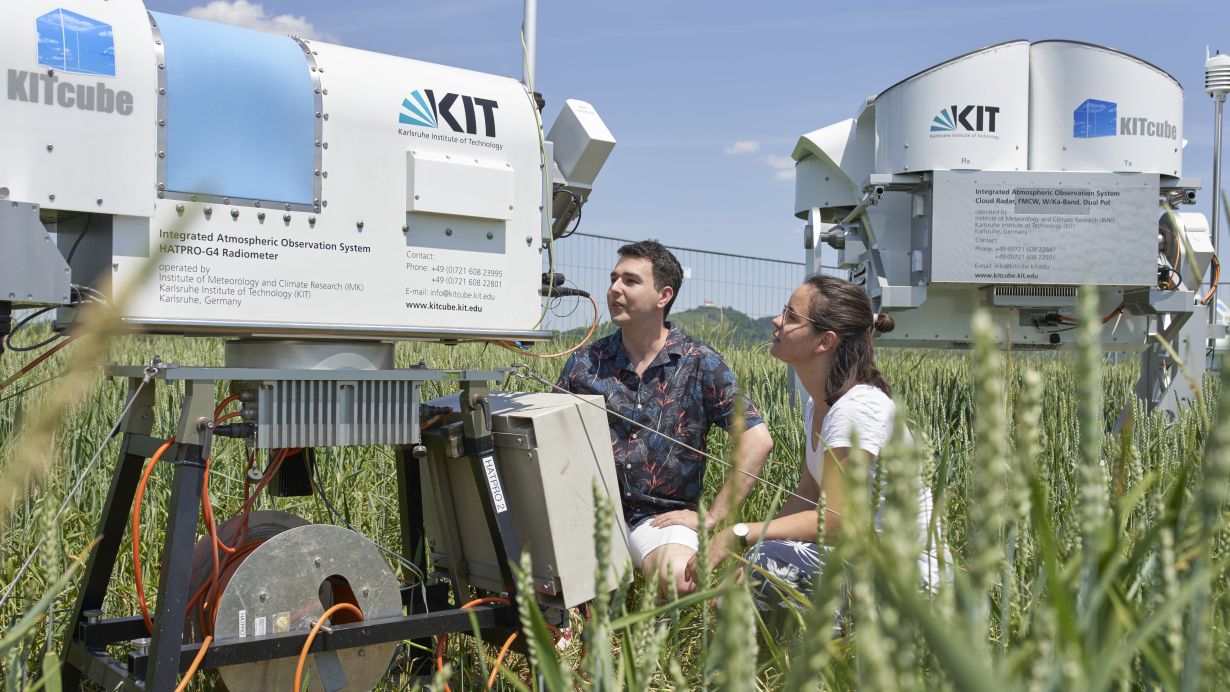In recent years, hailstorms, strong rain showers, and floods increased in frequency as well as in their effects on humans and the environment. In Germany, these are the natural phenomena having the highest damage potential. To better cope with these weather extremes in the long term, researchers study their development and effects within “Swabian MOSES,” a program coordinated by Karlsruhe Institute of Technology (KIT). The ongoing second campaign is aimed at understanding the complete lifecycle of thunderstorms, from their development to intensification to their immediate effects.
How do weather extremes develop in summer? What are their effects? Which damage do they cause? These questions are addressed by the measurement campaign “Swabian MOSES 2023.” Researchers want to better understand weather extremes. For this purpose, they observe the course of events from the first small initial cumulus cloud to the development of a thunderstorm and accompanying hail formation, to strong rain and floods, to the influx of pollutants into water bodies.
Regional Development of Thunderstorms, Strong Rain Showers, and Hailstorms
A major component used in the research campaign is KITcube, a KIT-made atmosphere observation system that consists of several measurement instruments. It is the first of its kind in Europe. “We use the KITcube to measure wind speeds at high altitudes and precipitation in high resolution. Its main location is Villingen-Schwenningen. In addition, we have chosen seven outstations to cover the entire measurement area,” says the coordinator of the campaign, Lutz Beckebanze from KIT’s Institute of Meteorology and Climate Research – Troposphere Research Department (IMK-TRO). “Our data are sent directly to the German Weather Service. In a parallel weather forecast cycle, they determine the influence of these additional observations on weather forecasts and their quality.”
Moreover, the researchers of KIT, in cooperation with colleagues from Bonn, Australia, and the USA, are hunting for storms. They use special probes to measure flow conditions in thunderstorm clouds and determine the growth of hailstones. Other working groups of IMK measure aerosols in the atmosphere and slight variations of air pressure with the help of a new infrasound instrument. Apart from the coordinators of IMK-TRO, the other two departments of IMK and KIT’s Institute for Water and River Basin Management (IWG) participate in the campaign.
The measurement campaign from May to September this year covers the area from the Swiss border to the region of Kirchheim unter Teck. Measurements in the Southern Black Forest concentrate on the development of thunderstorms. Most of them move in north-eastern direction, resulting in a very high number of weather extremes with high damage-causing potential in the area between Rottenburg and Kirchheim. That is why this region is chosen for studying the impacts of the thunderstorms in terms of water quality, ground humidity, and runoff rate.
About MOSES
The Swabian MOSES campaign is part of the Helmholtz Initiative MOSES (Modular Observation Solutions for Earth Systems). Within this initiative, institutes of the Helmholtz Association develop and test new observation systems and measurement concepts to study the interactions between short-term events like weather extremes and long-term development of environmental systems. MOSES consists of flexible and mobile observation modules to investigate the complete chain of events from formation to direct consequences.
Further Information
Swabian MOSES
MOSES in general
More about the KIT Climate and Environment Center
In close partnership with society, KIT develops solutions for urgent challenges – from climate change, energy transition and sustainable use of natural resources to artificial intelligence, sovereignty and an aging population. As The University in the Helmholtz Association, KIT unites scientific excellence from insight to application-driven research under one roof – and is thus in a unique position to drive this transformation. As a University of Excellence, KIT offers its more than 10,000 employees and 22,800 students outstanding opportunities to shape a sustainable and resilient future. KIT – Science for Impact.

